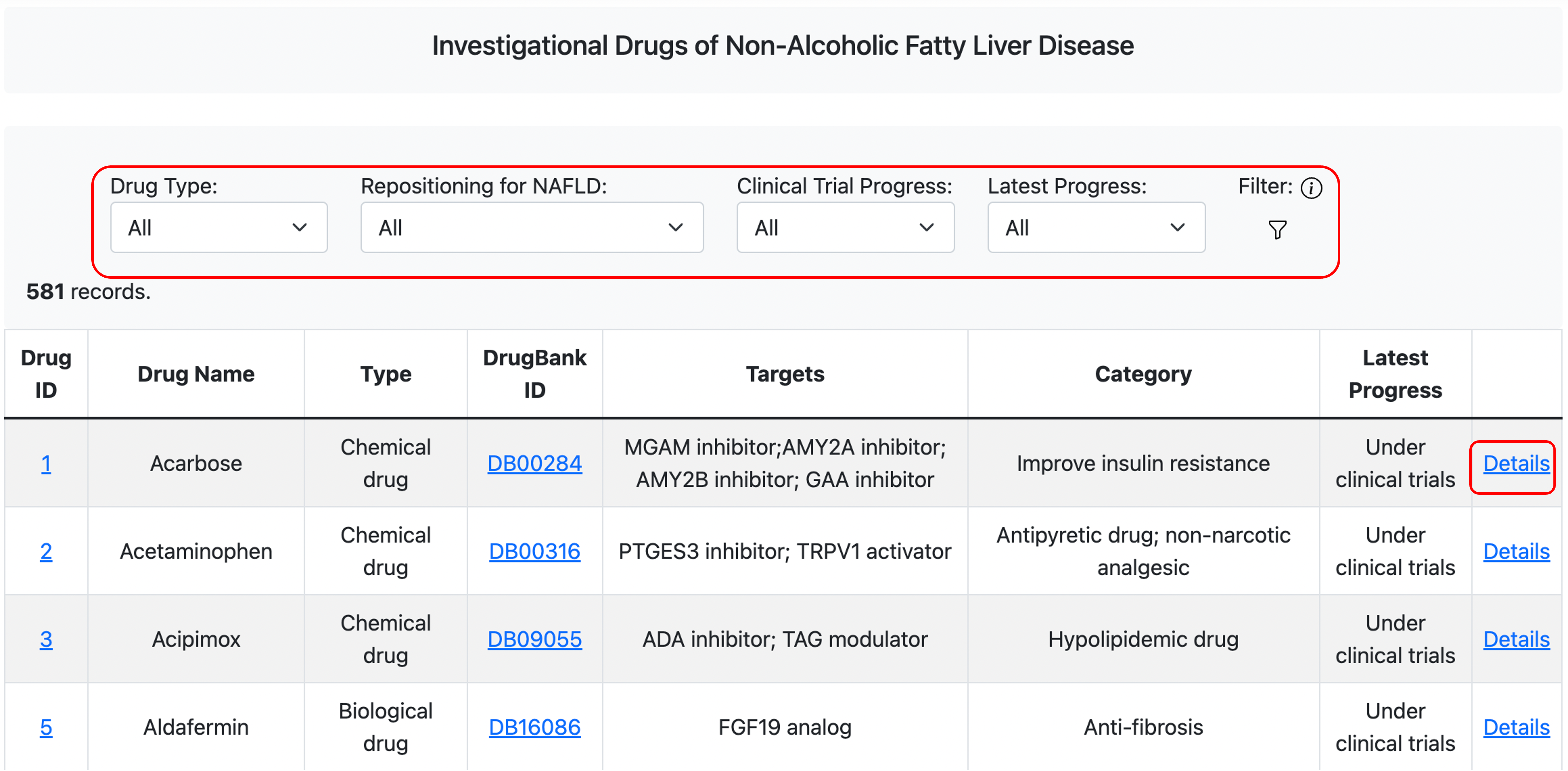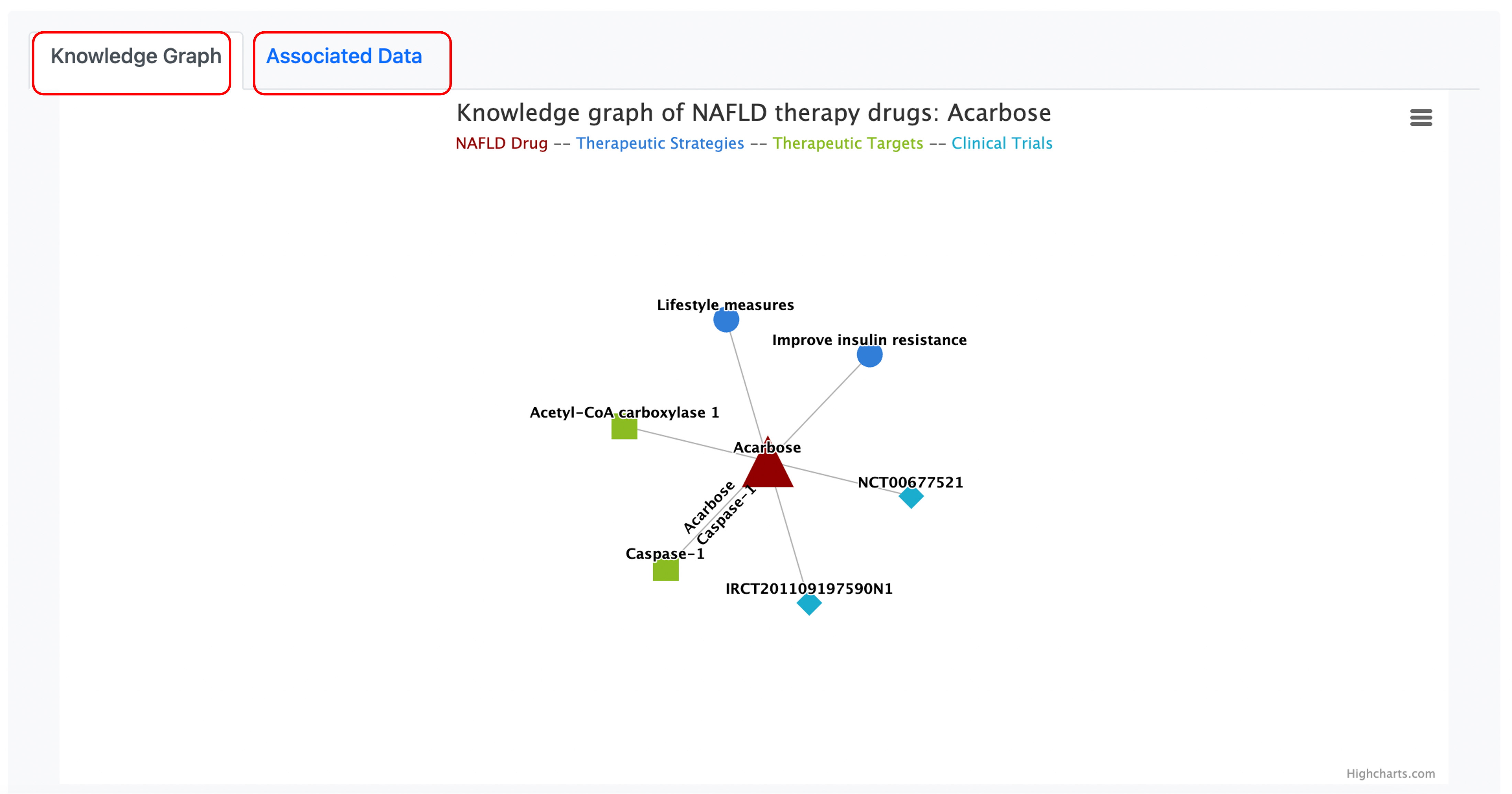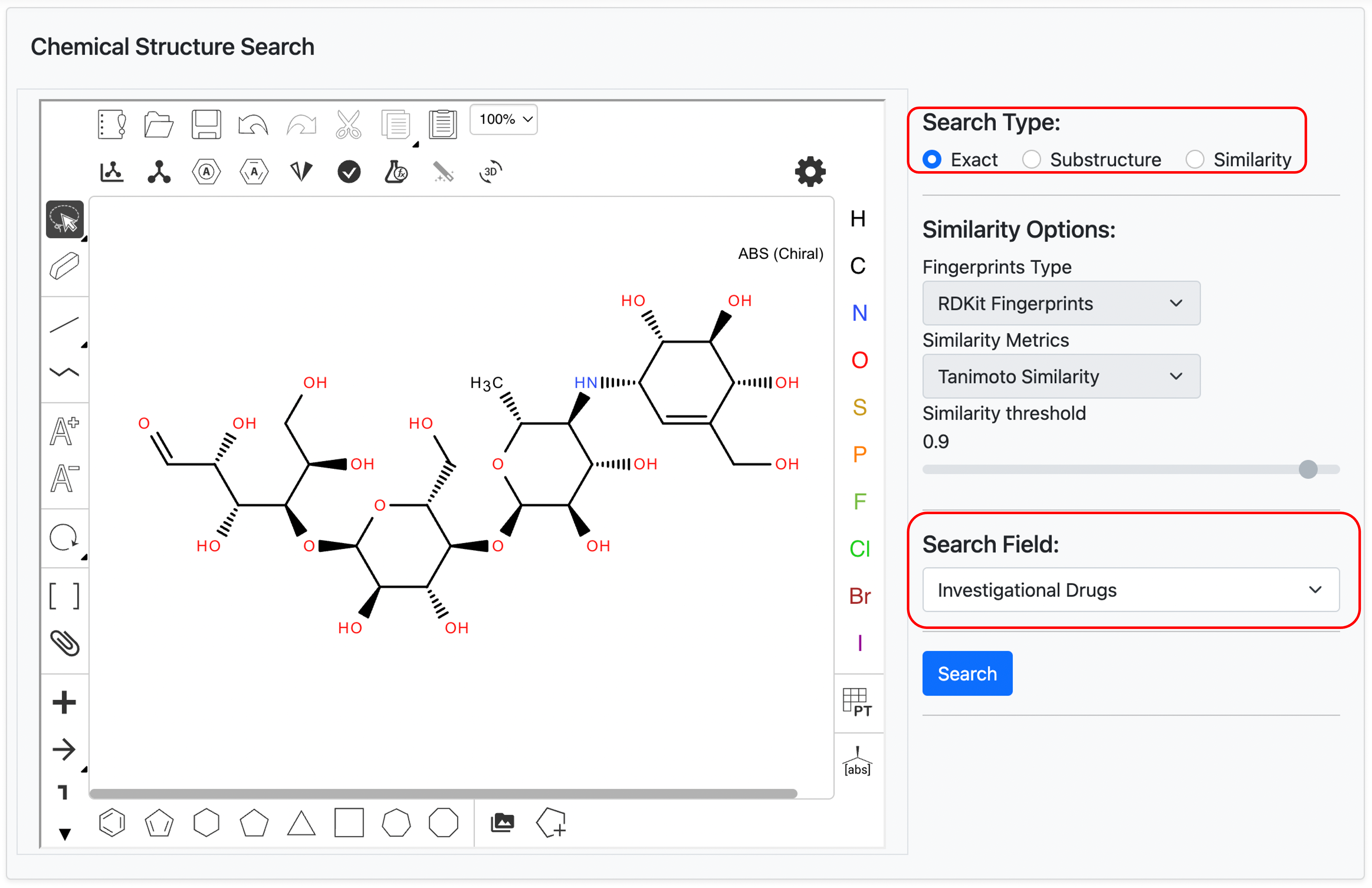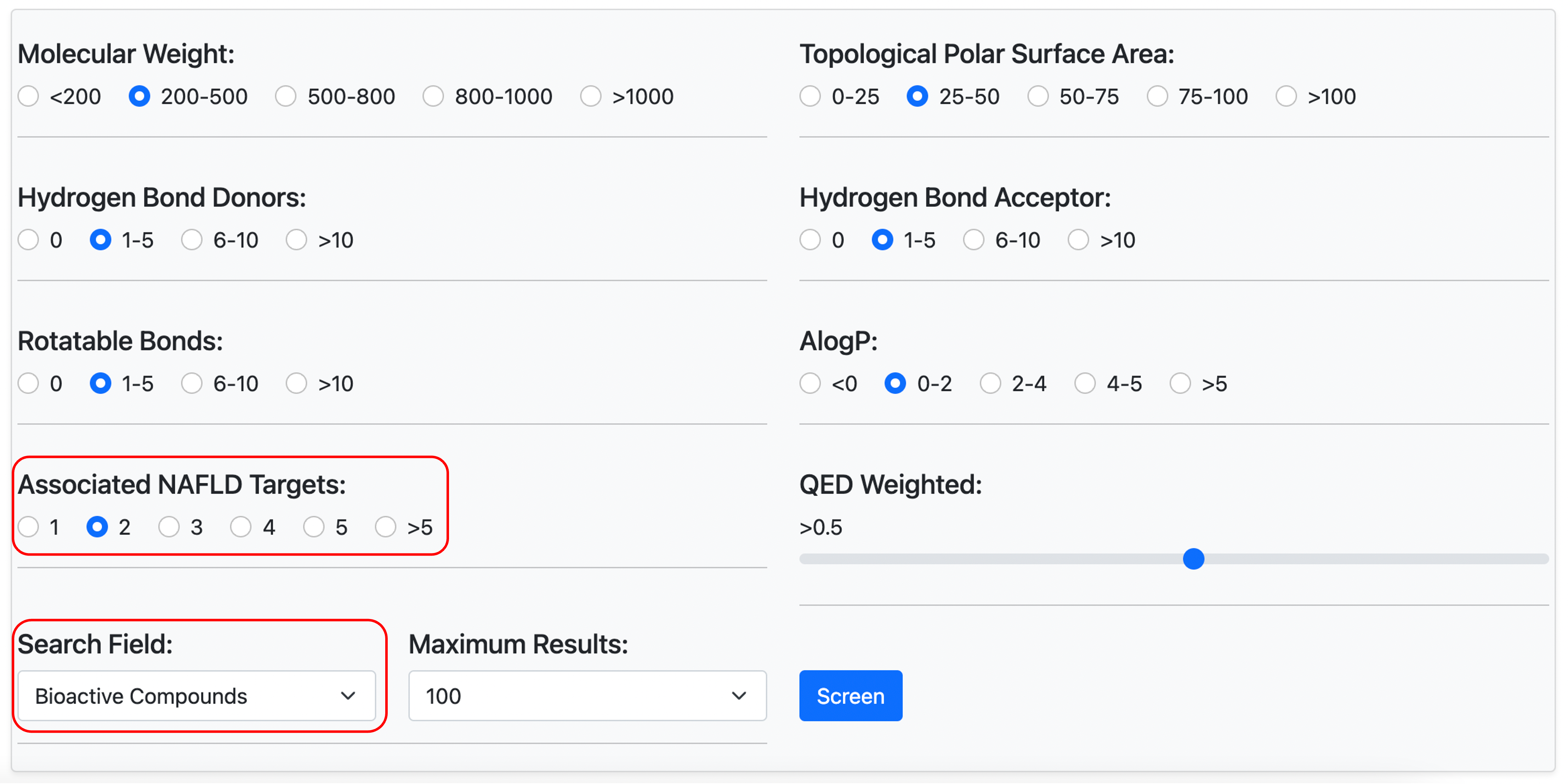Tutorial
1. Search
The search function on the Home Page and navigation bar provides full-text searching of CKDdb. All kinds of keywords about CKD, its pathogenesis (e.g., fibrosis, inflammasome, cardiorenal metabolic syndrome), and related drugs can be used as the search criteria. Users can also click the keywords below the search box to run some example search queries.
2. Browse data by category
All data records of CKDdb can be browsed by clicking individual entrances below the "Knowledge Base Curation" on the Home Page or the navigation bar for each category. Categories include key pathogenic drivers (e.g., APOL1 genetics, the NLRP3 inflammasome), therapeutic targets, drugs, and landmark clinical trials. There are filters to help users find and work with a specific subset of the data records according to their own concerns. Data entities and research articles are associated with each other in CKDdb with knowledge graphs in Details.


3. Structure search
The Structure Search function on the "Tools" Page provides "Exact", "Substructure" and "Similarity" chemical structure search of small molecule compounds in each data field. Options can be set when using "Similarity" search, and queries on large data fields may take some time to process.

4. Druglikeness screening
The Druglikeness Screening function on the "Tools" Page provides a screening tool for bioactive compounds and natural products based on calculated physicochemical properties. Lipinski's Rules of Five parameters and QED (quantitative estimate of drug-likeness) values can be set for customized screening. The screening criteria "Associated CKD Targets" refers to the number of therapeutic targets associated with individual bioactive compounds, drawing from well-established pathways such as RAAS blockade and SGLT2 inhibition, as well as emerging targets like the NLRP3 inflammasome. The criteria will automatically change to "Associated CKD Drugs" when "Investigational Compounds" is selected in the Search Field, which refers to the number of therapies (i.e, small molecules, biologics) associated with individual compounds.


